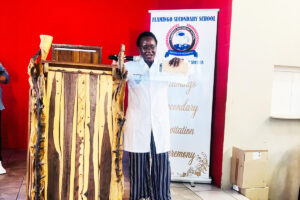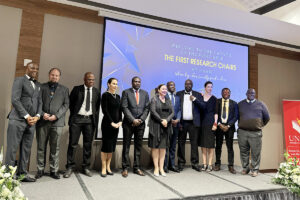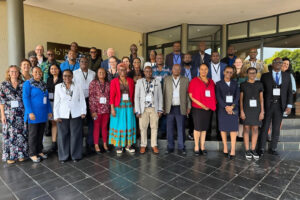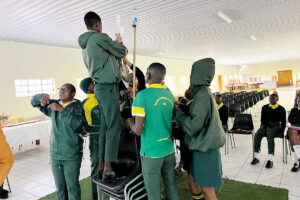In the heart of the Zambezi region lies a hidden gem of biodiversity – the Zambezi State Reserve. Recently, a group of passionate third- and final-year students from Katima Mulilo campus embarked on a scientific expedition to uncover the secrets of this pristine wilderness. Under the banner of Wildlife Management and Tourism Studies, this expedition aimed not only to enrich academic knowledge but also to contribute invaluable insights into the conservation and management of this vital ecosystem.
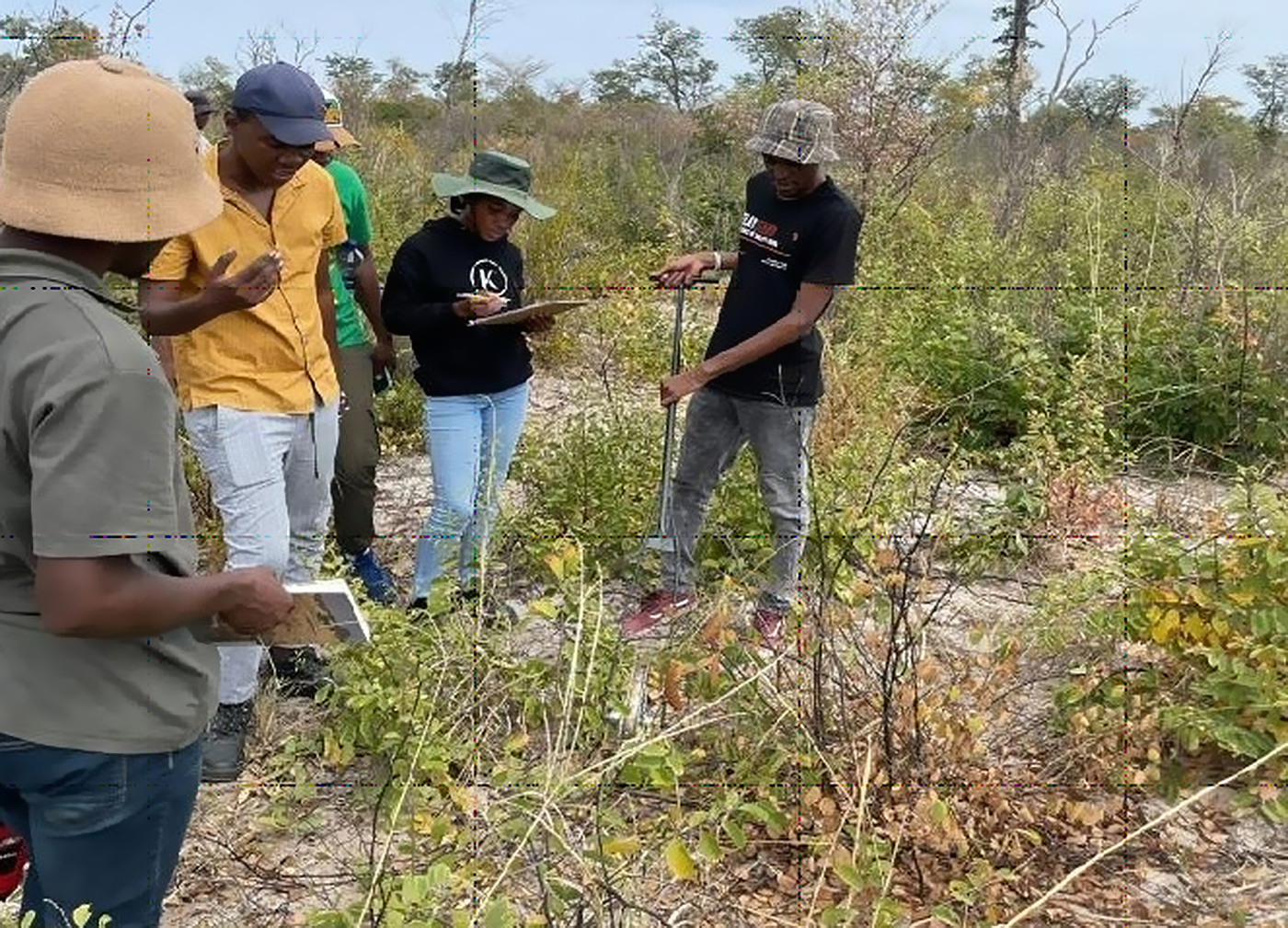
Exploration and Methodology
Early the morning on Monday, 6 May, our journey began with the setting up of our base camp at the Ministry of Environment and Forestry offices in Kongola. Spearheaded by Mr. Joe Hamutenya and Greg Mbaimbai, the technologists of the Department of Wildlife and Tourism at Katima Mulilo campus, the expedition was off to a promising start.
Led by Daniel Munyanya and his team, the expedition was meticulously planned, with a focus on employing diverse sampling techniques to capture the richness of fauna and flora within the reserve. Utilising a combination of vegetation Point Centered Quarter (PCQ) surveys, point counts, pitfall traps, and small mammal assessments, the team ventured into the depths of the reserve. Coordinated efforts ensured that each method was executed seamlessly, maximizing the yield of scientific data.

The vegetation assessment, conducted through PCQ surveys along 20 transects, provided a detailed understanding of the plant community’s composition and distribution. This meticulous approach allowed for the identification of key plant species and their ecological roles within the ecosystem.
Bird counts, facilitated through point counts, offered a glimpse into the avian diversity thriving within the reserve. As dawn broke, the tranquil melodies of birdsong filled the air, signaling the awakening of this vibrant ecosystem. Through systematic observations, the team documented a myriad of bird species, shedding light on their habitat preferences and population dynamics.
Pitfall traps and small mammal surveys delved into the intricate world of terrestrial fauna. Strategically placed traps revealed a diverse array of small mammals, from elusive rodents to agile shrews. By studying their abundance and diversity, the team gained valuable insights into the intricate interactions shaping the mammalian community within the reserve.
Grass cover and richness assessments further complemented the expedition’s findings, providing crucial information on the structural characteristics of the habitat. Through meticulous fieldwork and data analysis, the team unraveled the complex interplay between vegetation structure and biodiversity, laying the groundwork for future conservation efforts.
The expedition to Zambezi State Reserve stands as a testament to the unwavering dedication of aspiring conservationists and scientists. Through their collaborative efforts and innovative methodologies, Daniel Munyanya and his team have uncovered a wealth of ecological knowledge, illuminating the intricate tapestry of life within this pristine wilderness.
As we reflect on this journey of discovery, we not only celebrate the scientific achievements but also reaffirm our commitment to safeguarding the natural heritage of our planet. By harnessing the power of knowledge and collaboration, we can ensure the continued protection and preservation of places like the Zambezi State Reserve for generations to come.
Acknowledgments
The success of this expedition would not have been possible without the unwavering support of the Department of Wildlife Management and Tourism Studies at Katima Mulilo campus. Special thanks to Dr. Ezekiel Fabiano, the mentor of Ecological Methods modules, whose guidance and expertise paved the way for this field exploration.
Our heartfelt gratitude also goes out to Greg Mbaimbai and Joe Hamutenya, Technologists of the Department of Wildlife and Tourism at Katima Mulilo campus, for their invaluable assistance and logistical support throughout the expedition. Their dedication ensured the smooth operation of our fieldwork, facilitating the acquisition of valuable scientific data.
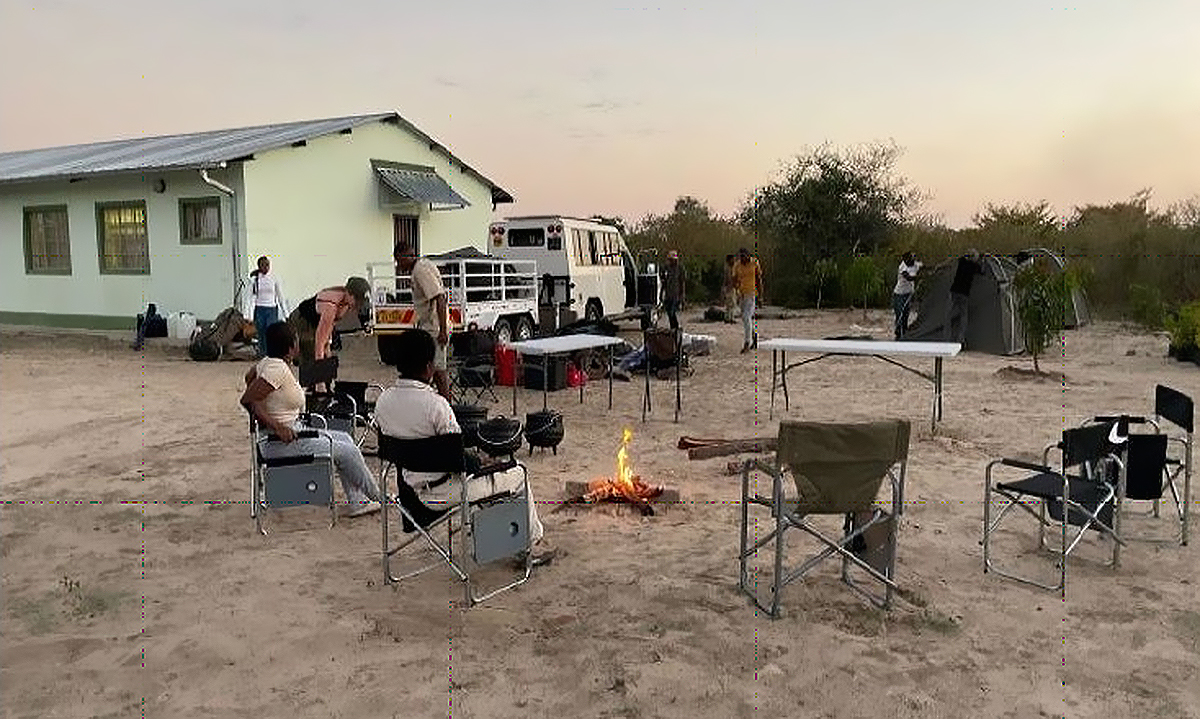
Special thanks also to the Head of Department, Dr. Evans, and Simasiku for approving this excursion, and the field assistants who contributed their time, knowledge, and enthusiasm to this endeavor. Their unwavering commitment to conservation and research has been instrumental in furthering our understanding of the Zambezi State Reserve’s biodiversity.
About the Author
Daniel Munyanya is a final-year student pursuing a BSc in Wildlife Management and Tourism Studies at Katima Mulilo campus. With a passion for conservation and field research, Daniel seeks to bridge the gap between scientific knowledge and on-the-ground conservation efforts. His dedication to ecological exploration is reflected in his commitment to unraveling the mysteries of biodiversity in remote wilderness areas.
Original story by Daniel Munyanya (Final year Student)


